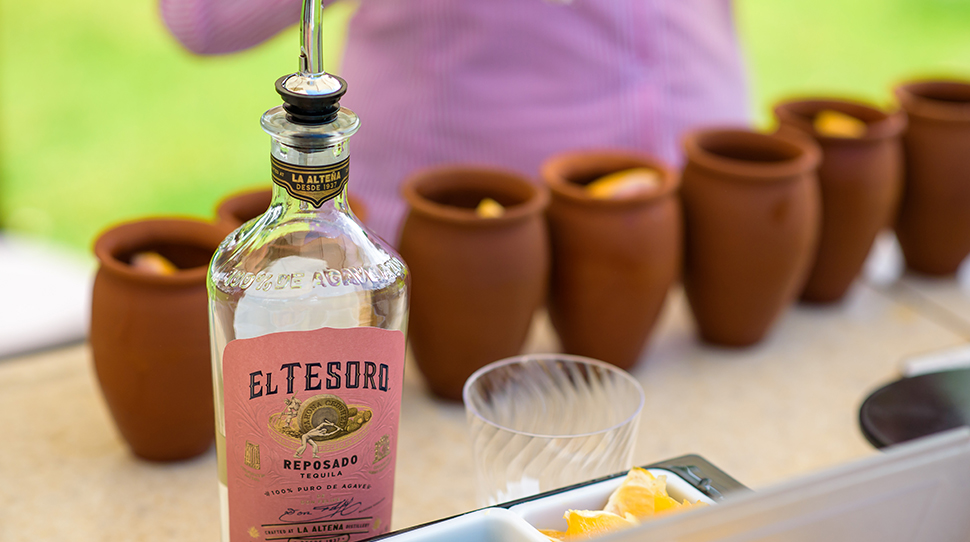

“Agave is in my life,” Carlos Camarena says to our tour group, as he scans the 1,235 acres of light-blue spikes shooting up from the rust-colored soil. For Camarena, master distiller of El Tesoro and a fifth-generation tequilero, making tequila is not just some obligatory family business he was born into, but a guiding passion that fuels his visionary methods.
“What else is there?” Camarena inquires. “I’m always asking myself, ‘Where else can we go with tequila?’ It’s what my father and his father asked, and I do the same.” He’s referring to how the family petitioned the Mexican government to designate an “extra” anejo category (aged more than three years) and how they were the frontrunner in aging tequila in exotic barrels — like the prized El Tesoro Paradiso that’s aged five years in French-oak-used cognac barrels.
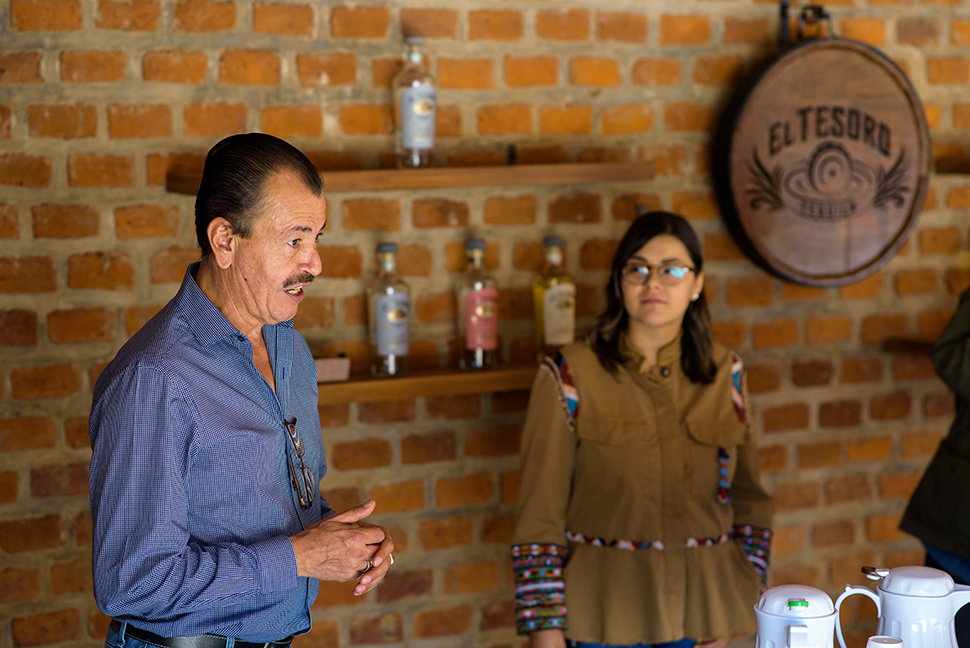
But to understand how this progressive, luxury tequila brand came to be, it’s important to acknowledge its past. “We are two-faced,” Camarena says. “Not in the bad sense of the word, but I mean that we honor traditional tequila-making methods, but also we are looking forward to the future.”
Founded in 1937, La Alteña (the family distillery that also makes Tapatio and Ocho tequila) was the brainchild of Carlos’ grandfather, Don Felipe Camarena. More than 80 years later, finessing the purest essence from Blue Weber agave — the only agave varietal tequila can be made from — is still its mission. This means employing painstaking methods like allowing the agave plant to fully mature six or seven years (due to the blue agave shortage, many tequila brands must harvest early, thus inhibiting the full flavors of a mature agave), harvesting by hand with an ancient ax-like tool (on a tour, you’ll learn techniques from authentic jimadors, or agave harvesters), grinding the pulp with a tahona (a giant circular stone) and distilling it slowly into copper pot stills.
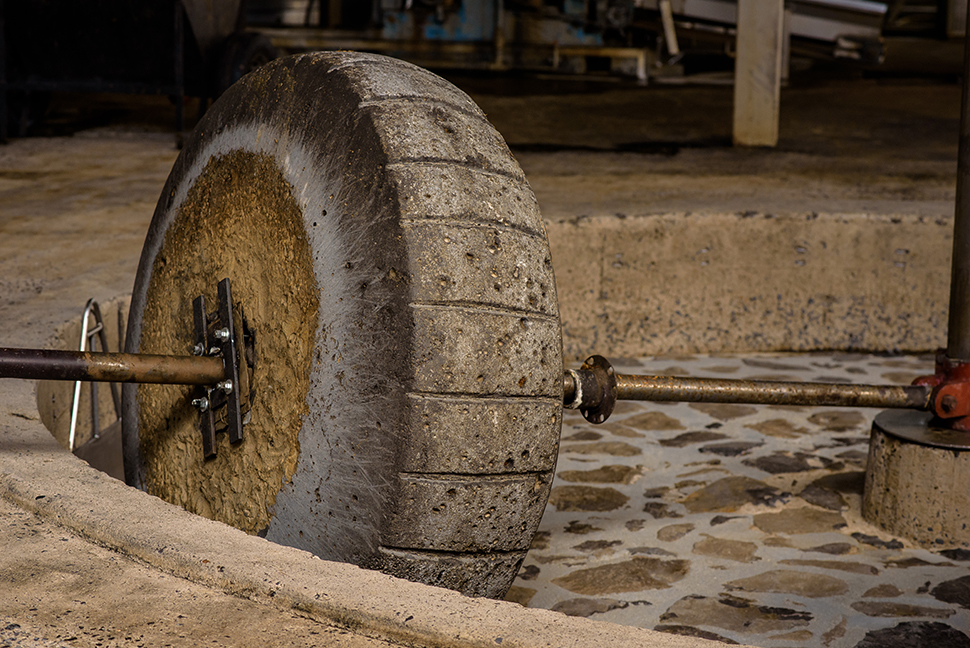
After watching how agave is steamed, sorted and pressed under
the great weight of the tahona via John Deere tractor, Camarena leads our
group downstairs to the stills. Here, the juice of the agave is heated to turn
into tequila. He hands out these animal horn-looking devices and begins pouring
freshly distilled tequila into them.
“Do you know why we shoot tequila?” Camarena asks, with a
glint in his eye. He proceeds to tell the story about how Mexican field workers
used what they had to help them endure their back-breaking work by taking a nip
of the local spirit. In this case, it was from a hollowed-out horn of an
animal, usually a cow. Of course, there weren’t a lot of makeshift
horns-turned-glasses available, so the farmers would gather around on a break,
take a shot from the horn and pass it along. There was no time to sip it as we
do today; the harvest beckoned.
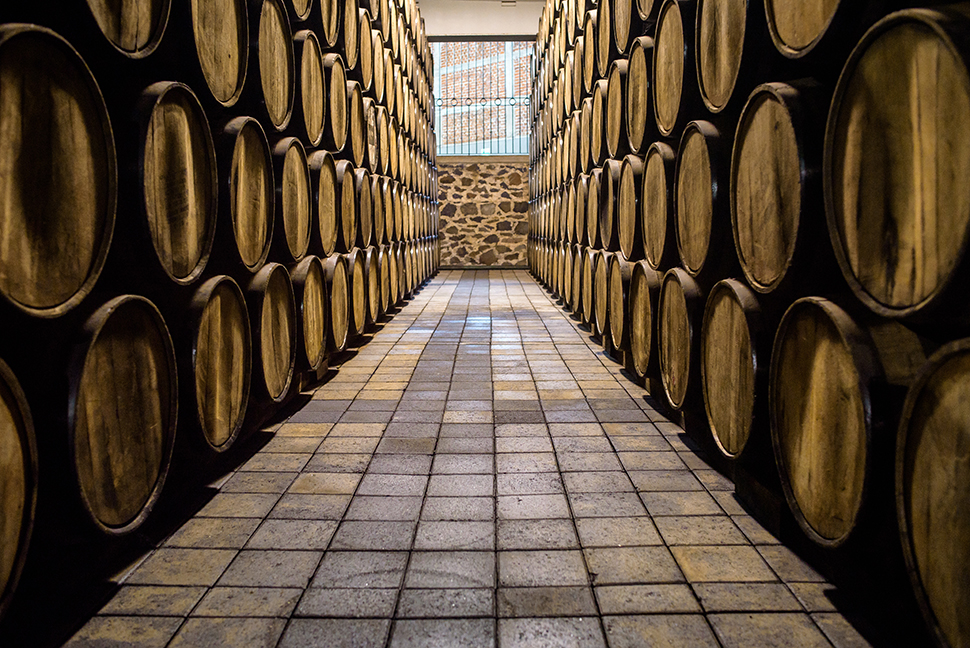
Next, we take a peek at the rows and rows of barrels aging the precious liquid of the gods, as ancient Mexican folklore deems tequila. It looks much like a wine cave in Napa or Champagne, France.
“This is the moment I’ve been waiting for,” Camarena says. “You get to experience our family’s legacy!” He then escorts us to a banquet table set with stemmed glassware. With the help of his eldest daughter, Fany Camarena, who is learning all things tequila and even wore a necklace adorned with agave plants at her recent wedding, Camarena leads a tasting of all three expressions of El Tesoro, which means “treasure” in Spanish.
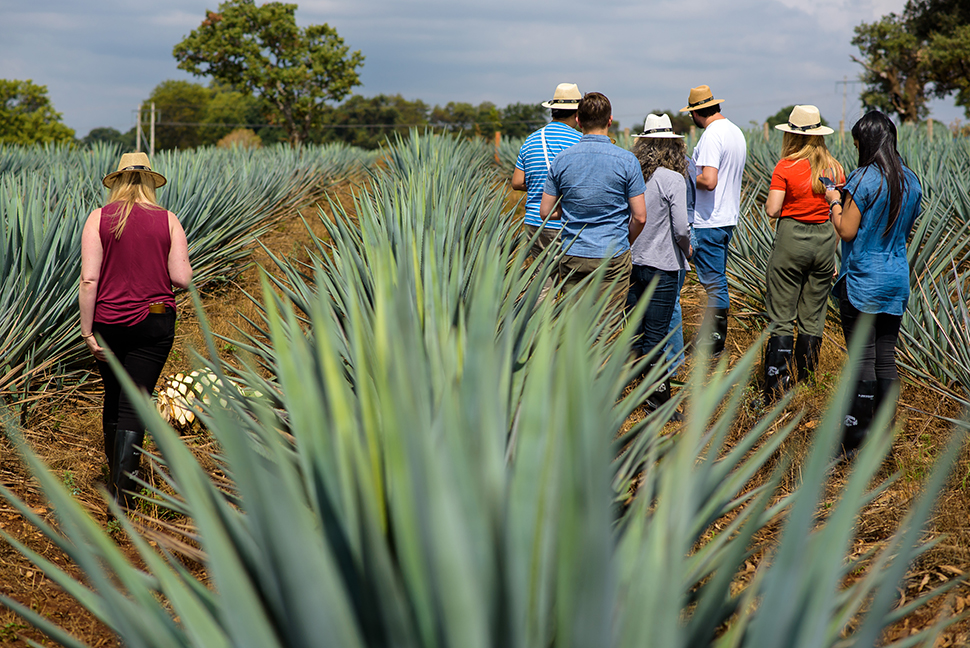
As he swirls his glass of El Tesoro Reposado, which is held up to the light to inspect and then buried in his nose to inhale the aromas, Camarena says, “It’s never the same experience. We respect Mother Nature and the terroir at the moment when we harvest the agave. Unlike other tequila brands, we don’t want every bottle to taste the same — how boring! Today, I smell melons and cherries in this bottle. Perhaps, tomorrow, I will smell chocolate and cinnamon. Ah, the agave plant is absolutely increíble!”
To visit the family distillery (roughly a two-hour drive east from Jalisco’s capital of Guadalajara), book a tour through El Tesoro’s website. Although Camarena doesn’t regularly lead these sessions, he’s usually around surveying the daily production of his life’s work. If he does stop by to say hi to your group, make sure to ask him about the love affair between bats and agave — the biology lesson is fascinating.
